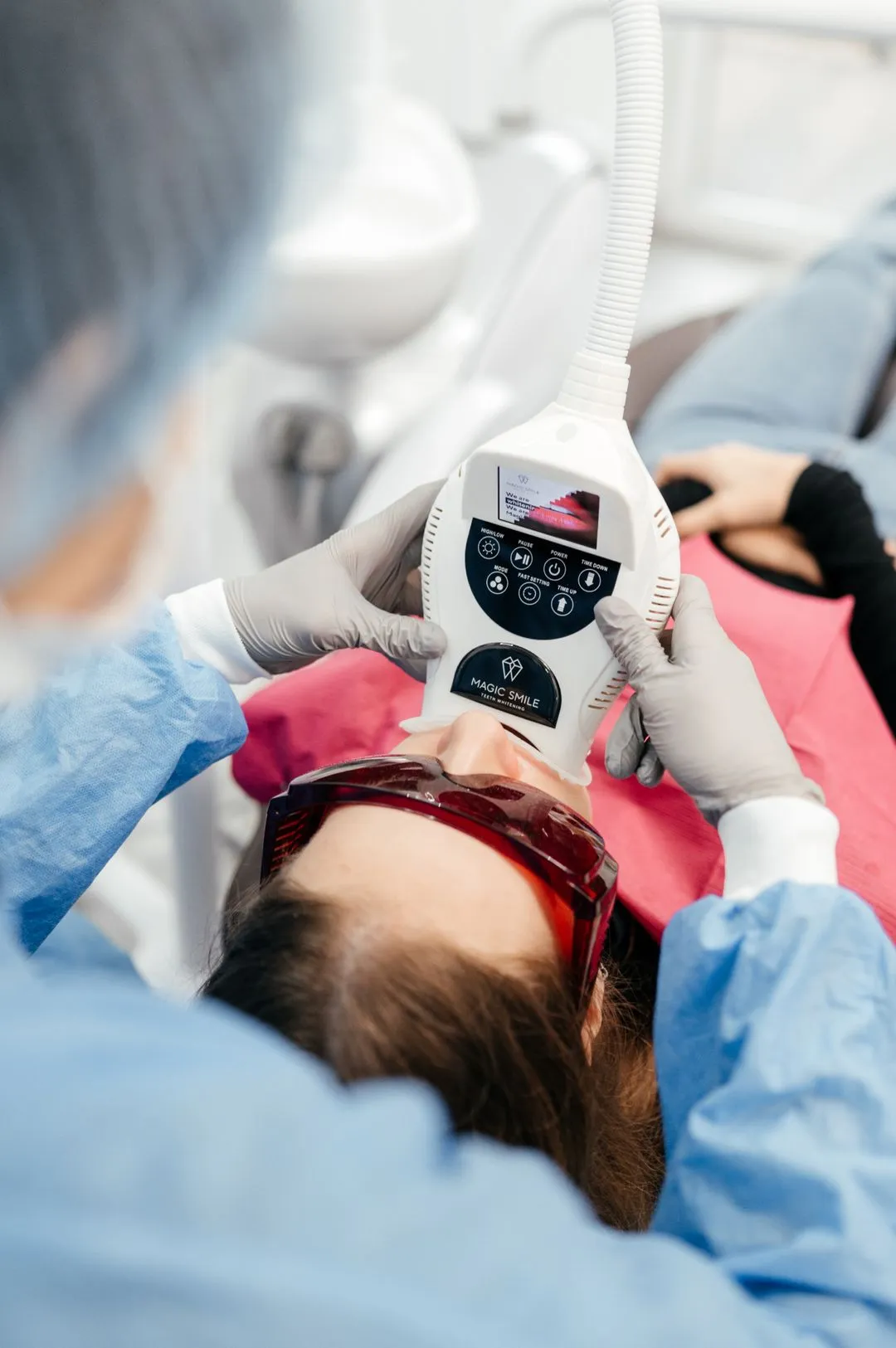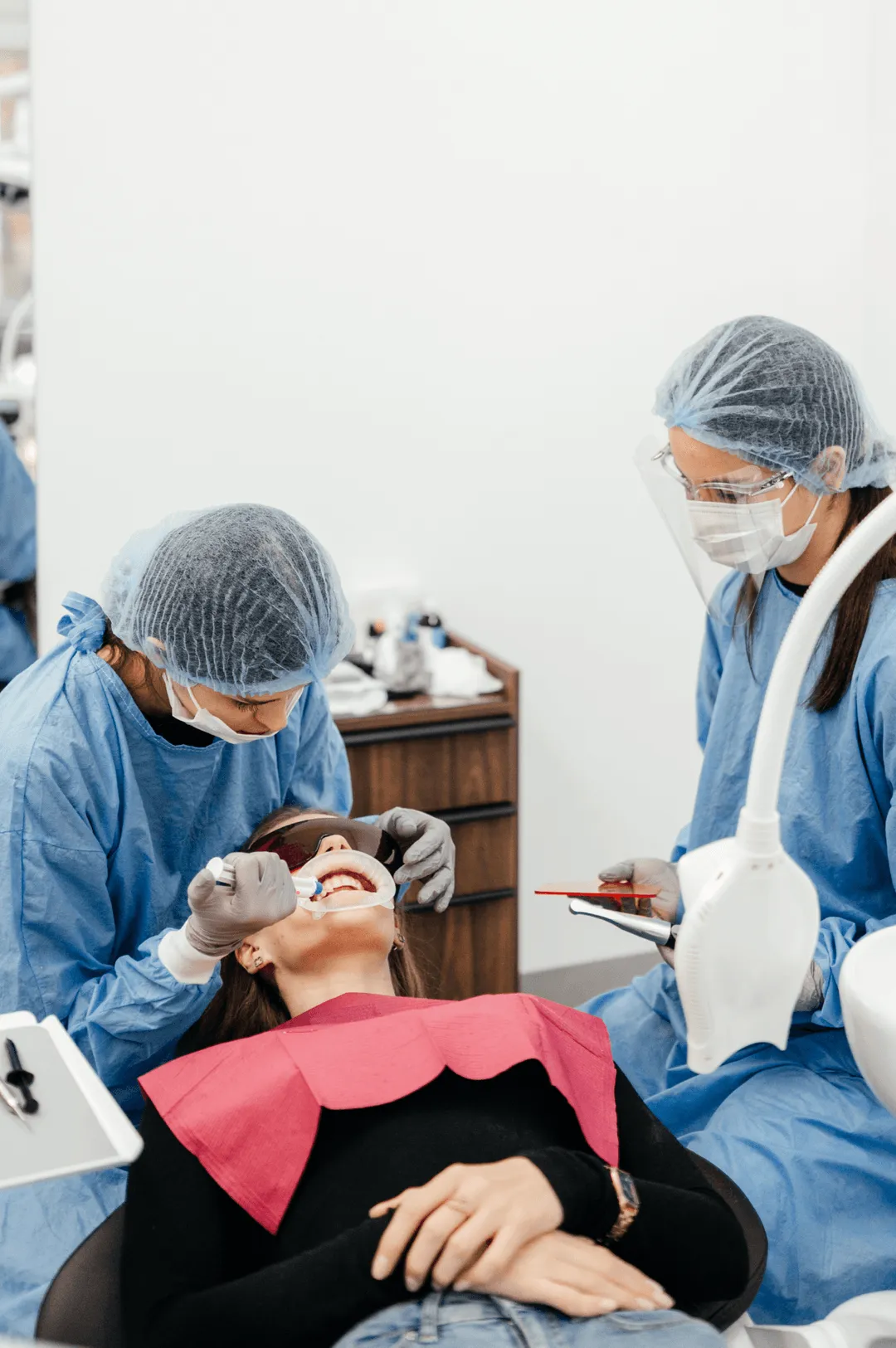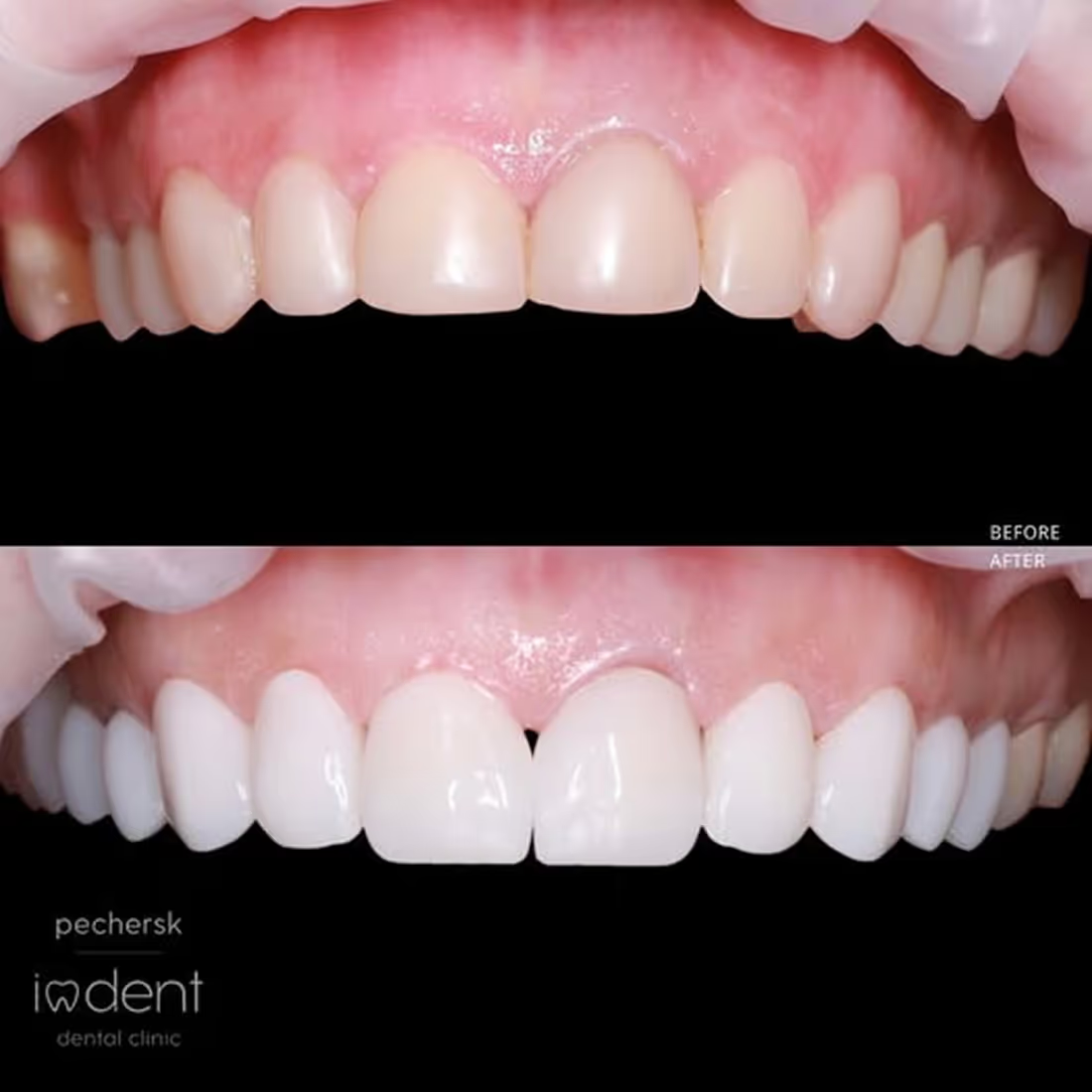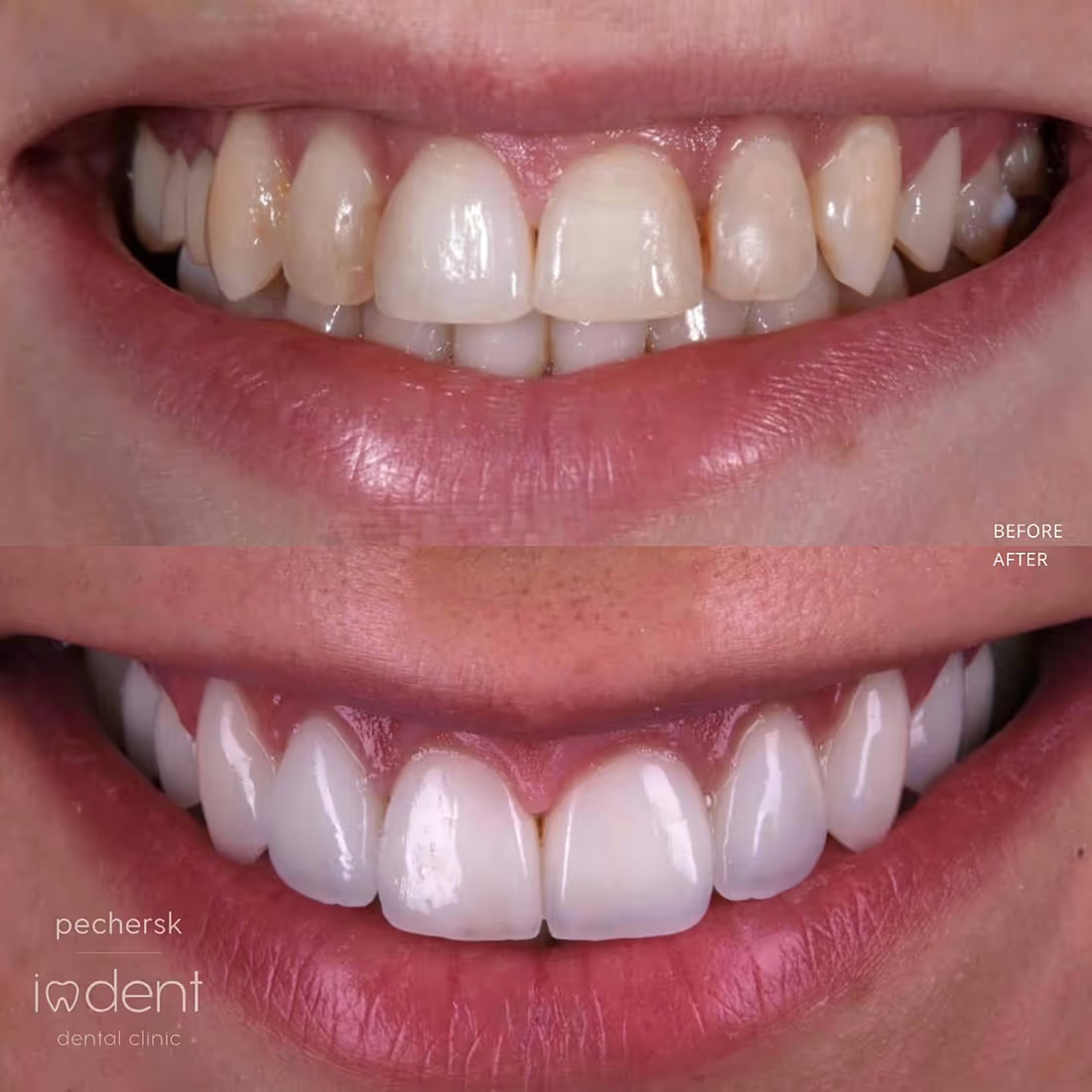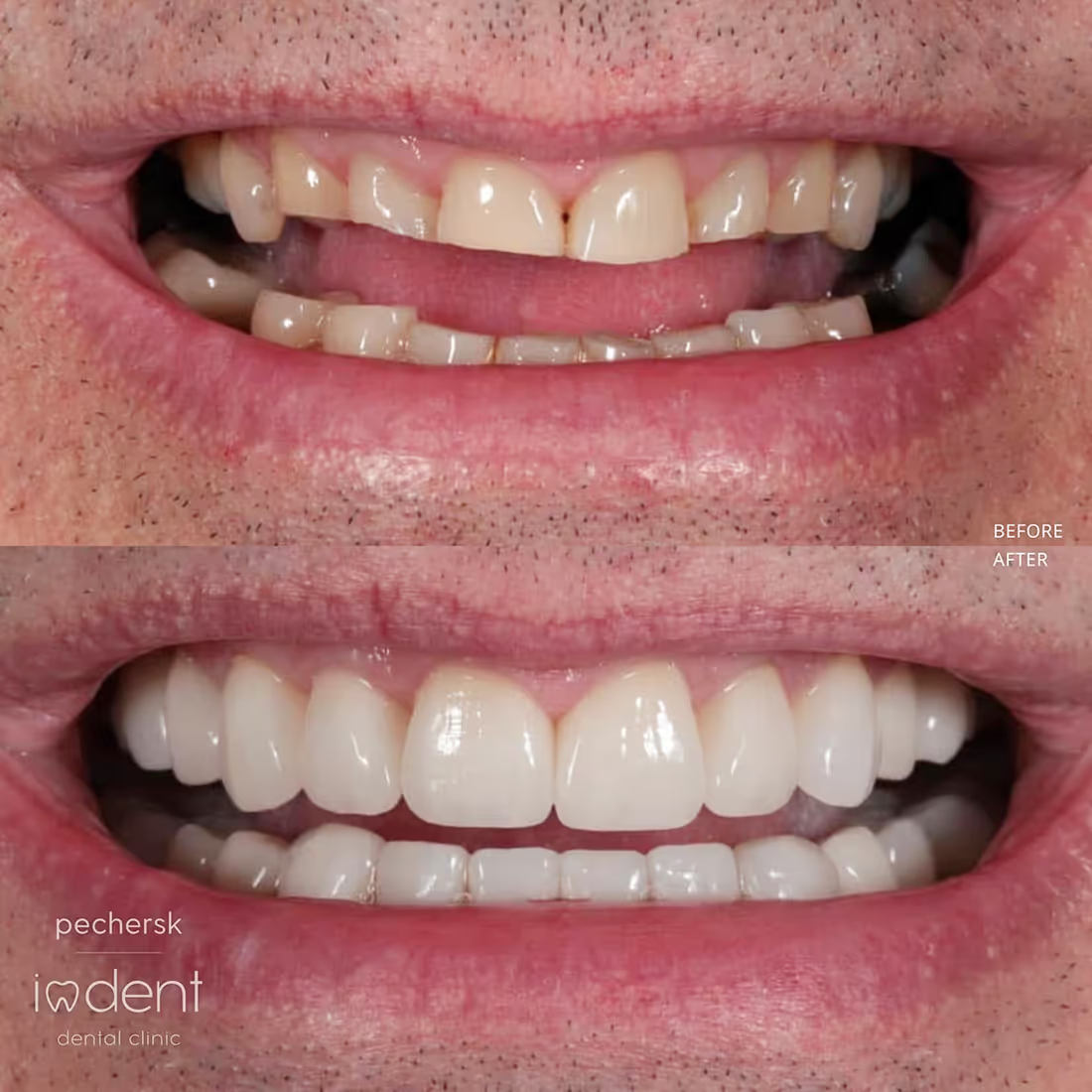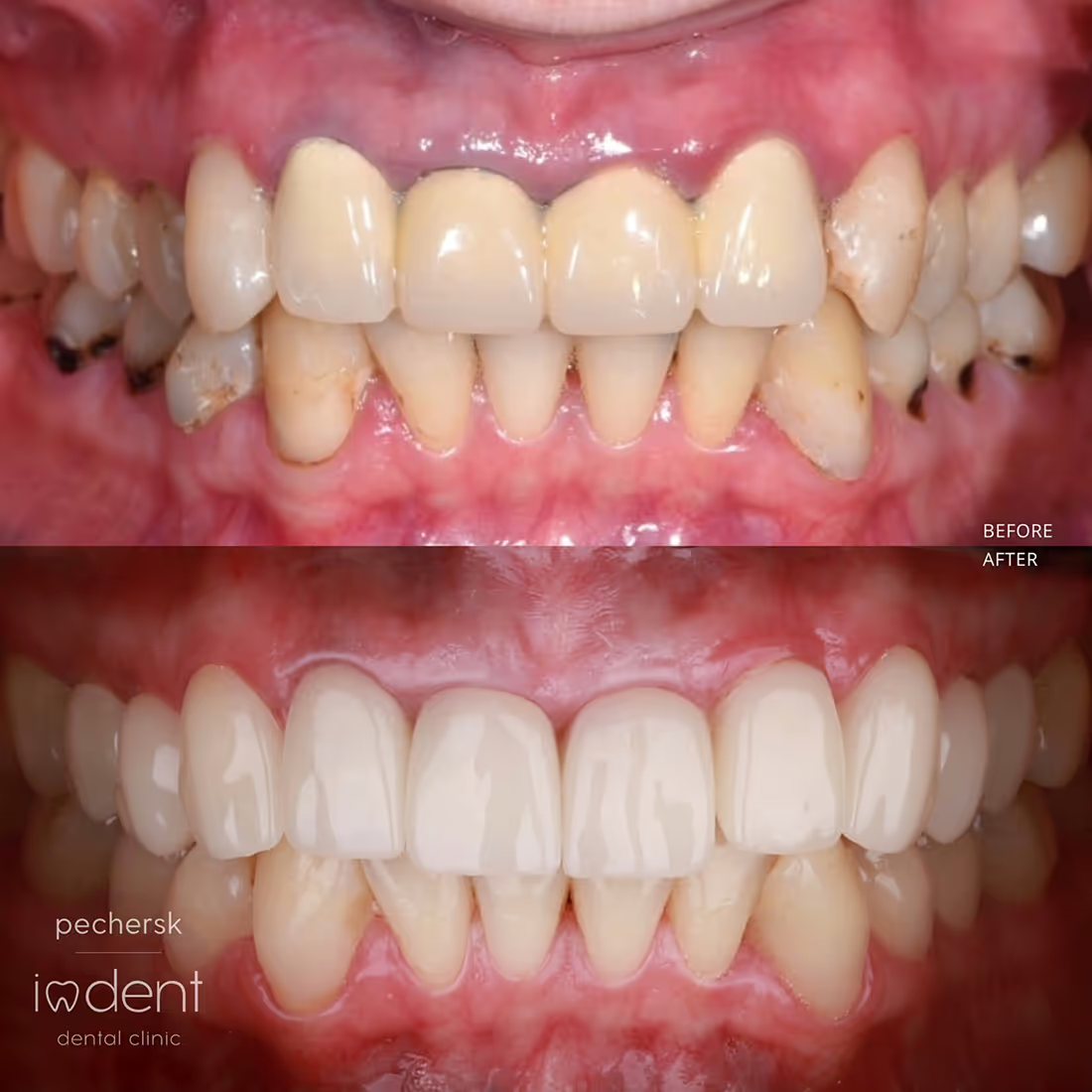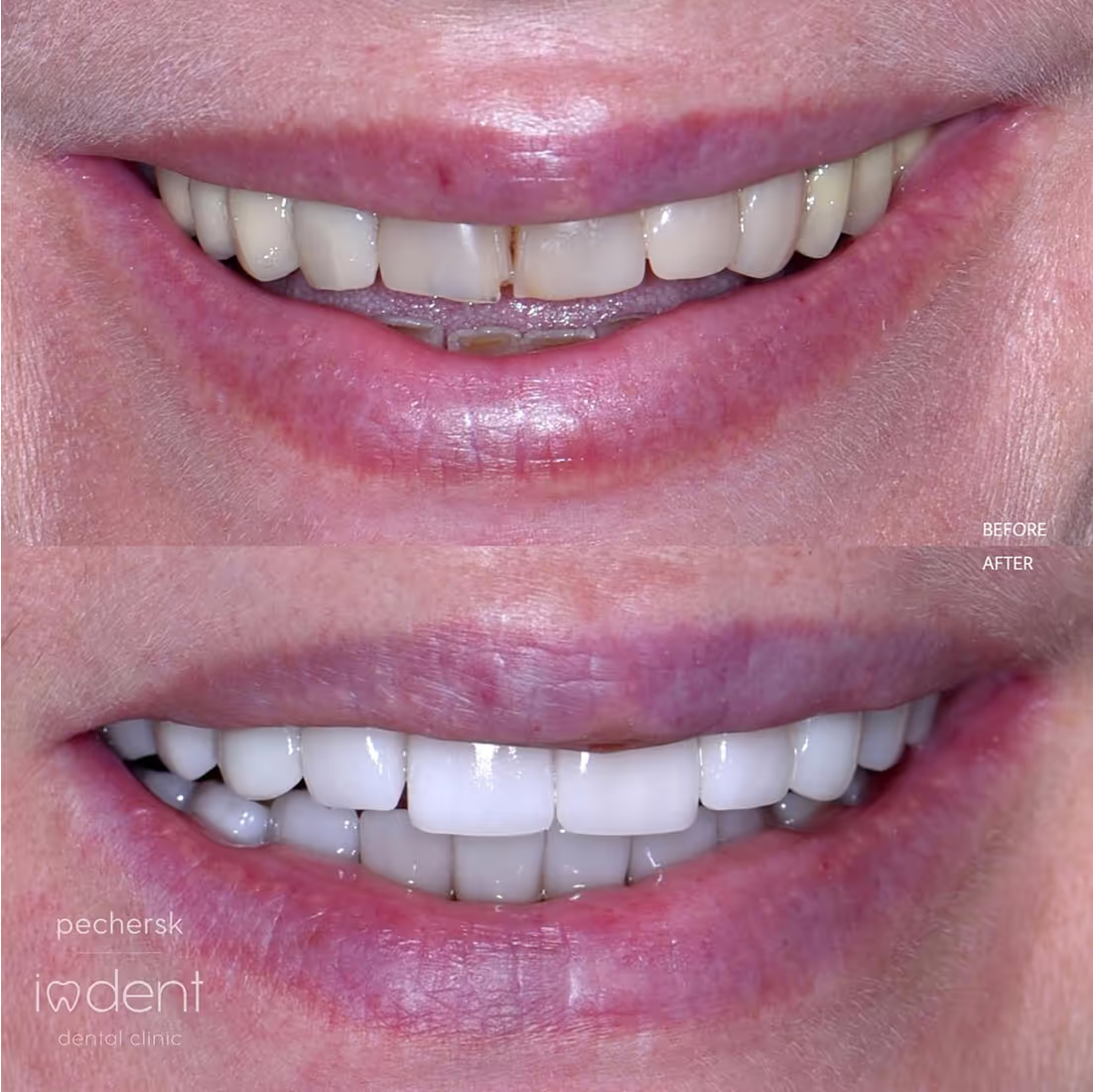Digital tooth prosthetics
This is a modern method in aesthetic dentistry that uses computer technology for designing and creating dental prosthetics.
Digital smile design
Digital smile design - is a process in which a dentist uses special software to create a three-dimensional model of the patient's teeth. With its help, the doctor can accurately reproduce the shape, color of the patient's teeth and develop a plan for necessary dental procedures. This saves time and money and also allows the patient to actively participate in creating their own appearance.
Dental prosthetics using ceramic overlays and veneers
Using thin plates (0.4mm) made of strong milled ceramics, called veneers, the most aesthetic and uniform set of teeth can be achieved by correcting various defects (such as discoloration, darkening, gaps between teeth, chips, and cracks). Each veneer is individually made for the patient, taking into account their wishes regarding size and color. The material is five times stronger than photopolymer restoration and has the highest transparency of all types of restorations, making it the most aesthetic and durable.
Ceramic overlays are also a type of microprosthesis that has better parameters than a filling. It is characterized by high strength (5 times stronger), chemical adhesion to tooth tissue (stronger due to a thin layer of composite cement), and aesthetics. It is used to replace old large fillings in live teeth in case of a large cavity due to caries and pathological tooth wear. It is important to note that this restoration method is only possible for molars and canines since the shape of the incisors is not suitable for its use.
Prosthetics with zirconia, non-metal crowns
The goal of a dental crown is to restore a damaged tooth and return its function. Crowns made from ceramics or zirconium dioxide are used to restore partially damaged teeth. Created using CAD/CAM technology, they are unnoticeable and natural-looking, which is important for ensuring the natural aesthetics of the dental arch.
Implant-supported prostheses
Implant-supported prostheses created through computer modeling allow for safe installation into the oral cavity without causing damage to surrounding tissues. This technology works well for various types of prostheses, from 3 connected crowns on 2 implants to full prostheses on 4, 6, 8, or more titanium implants.

